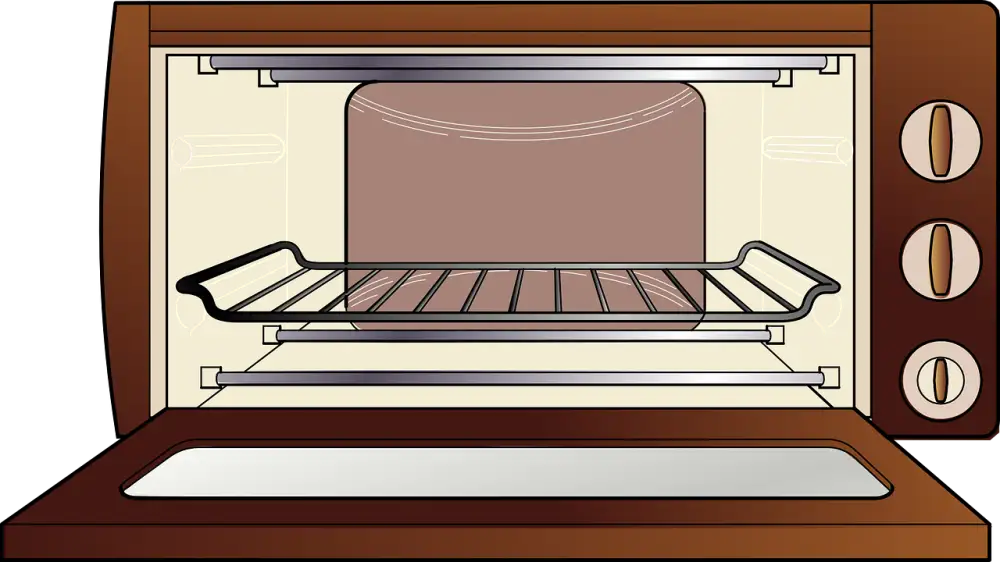Mastering the Art of Cooking with a Convection Oven: Your Step-by-Step Guide to Perfectly Baked Delights at Home

- Understanding the Basics of Convection Cooking
- Preheating Your Convection Oven
- Adjusting Cooking Times and Temperatures
- Positioning and Arranging Food in the Oven
- Using the Convection Setting for Baking
- Utilizing the Convection Setting for Roasting
- Tips for Successful Convection Cooking
- Cleaning and Maintaining Your Convection Oven
Convection ovens have revolutionized the way we cook, providing faster and more efficient results. Unlike traditional ovens that rely on radiant heat, convection ovens use a fan to circulate hot air throughout the cooking chamber. This constant circulation ensures even heat distribution, resulting in perfectly cooked dishes every time. Whether you're a seasoned chef or a novice in the kitchen, mastering the art of cooking with a convection oven will open up a world of culinary possibilities. In this guide, we will take you through the basics of convection cooking and provide you with step-by-step instructions to achieve delectable delights at home. So let's dive in and discover the wonders of cooking with a convection oven!
Understanding the Basics of Convection Cooking
Convection cooking is a method that utilizes a fan to circulate hot air around the food, resulting in faster and more even cooking. Unlike traditional ovens, which rely on radiant heat, convection ovens provide a constant flow of hot air, ensuring that food is cooked thoroughly from all sides.
The circulating air in a convection oven helps to eliminate hot spots and reduces cooking time by up to 25%. This means you can enjoy perfectly cooked meals in less time. Additionally, the even distribution of heat ensures that your dishes are cooked uniformly, preventing overcooking or undercooking.
It's important to note that when using a convection oven, you may need to adjust your recipes slightly. The increased airflow can cause foods to cook faster than they would in a conventional oven. It's recommended to reduce the temperature by about 25 degrees Fahrenheit and decrease the cooking time by approximately 10-15%.
By understanding the basics of convection cooking and making necessary adjustments, you can take full advantage of this innovative technology and achieve delicious results every time you use your convection oven.
Preheating Your Convection Oven
Preheating your convection oven is an essential step to ensure optimal cooking results. Unlike traditional ovens, convection ovens rely on the circulation of hot air to cook food evenly and efficiently. To preheat your convection oven, simply set the desired temperature and allow it to heat up for about 10-15 minutes. This ensures that the oven reaches the desired temperature and that the hot air is evenly distributed throughout the interior. Skipping this step may result in uneven cooking or longer cooking times. So remember, always preheat your convection oven for best results!
Adjusting Cooking Times and Temperatures
When using a convection oven, it's important to adjust your cooking times and temperatures to ensure perfectly baked delights. The circulating hot air in a convection oven cooks food faster than a traditional oven, so you'll need to reduce the cooking time by about 25%. Additionally, lower the temperature by about 25 degrees Fahrenheit compared to what the recipe suggests. This adjustment will help prevent overcooking and ensure even browning. Remember to keep an eye on your food as it cooks, as the reduced cooking time may vary depending on the recipe and the size of the dish. By making these simple adjustments, you'll achieve consistently delicious results every time you use your convection oven.
Positioning and Arranging Food in the Oven
Positioning and arranging food in a convection oven is crucial for achieving even cooking and browning. To ensure proper airflow, leave enough space between the dishes, allowing hot air to circulate freely. Avoid overcrowding the oven as it can lead to uneven cooking and longer cooking times. For best results, use shallow pans or baking sheets that allow the hot air to reach all sides of the food. Additionally, consider rotating the trays halfway through the cooking process to promote even browning. By paying attention to how you position and arrange your food, you can maximize the benefits of convection cooking and achieve perfectly baked delights at home.
Using the Convection Setting for Baking
When it comes to baking in a convection oven, the convection setting can be a game-changer. This setting uses a fan to circulate hot air evenly throughout the oven, resulting in perfectly baked goods with a crispy exterior and moist interior.
To use the convection setting for baking, start by preheating your oven as usual. Then, simply select the convection setting on your oven's control panel. The fan will start circulating the hot air, ensuring even heat distribution.
Keep in mind that when using the convection setting for baking, you may need to adjust both the cooking time and temperature. Generally, you can reduce the temperature by about 25 degrees Fahrenheit and shorten the cooking time by about 10-15%. However, it's always best to consult your recipe or use a conversion chart provided by your oven manufacturer.
When arranging food in the oven for baking, make sure to leave enough space between items to allow proper air circulation. Avoid overcrowding as this can lead to uneven baking.
The convection setting is particularly great for baking cookies, pastries, breads, and cakes. It helps achieve an even rise and golden-brown crust. However, delicate items like soufflés or custards may not be suitable for convection baking as they require gentler heat.
Remember to keep an eye on your baked goods while they're in the oven. Due to the faster cooking time with convection baking, they may finish earlier than expected. Use visual cues like browning and toothpick tests to determine doneness.
By using the convection setting for baking in your convection oven, you'll unlock a whole new level of precision and excellence in your homemade treats. So go ahead and experiment with different recipes - you'll be amazed at how effortlessly you can achieve bakery-worthy results!
Utilizing the Convection Setting for Roasting
Roasting is a popular cooking method that brings out the natural flavors and textures of meats, vegetables, and even fruits. With a convection oven, you can take your roasting game to the next level.
When using the convection setting for roasting, there are a few key things to keep in mind. First, make sure to use a shallow roasting pan or baking sheet with low sides. This allows for better air circulation around the food, resulting in more even cooking.
Next, it's important to adjust the cooking time and temperature. Convection ovens cook faster than traditional ovens, so reduce the recommended cooking time by about 25%. Additionally, lower the temperature by 25 degrees Fahrenheit to prevent overcooking.
To ensure even browning and crispiness, consider using a wire rack inside your roasting pan. This elevates the food and allows hot air to circulate underneath, promoting better browning on all sides.
Lastly, avoid overcrowding the oven. Leave enough space between each item being roasted to allow for proper air circulation. If necessary, cook in batches or use multiple racks if your convection oven allows.
By utilizing these tips and taking advantage of the convection setting for roasting, you'll achieve perfectly cooked meats and vegetables with enhanced flavors and textures. Get ready to impress your family and friends with deliciously roasted dishes!
Tips for Successful Convection Cooking
1. Use the right cookware: Opt for shallow, lightweight pans with low sides to allow hot air to circulate evenly around the food.
2. Reduce cooking time: Convection ovens cook faster than traditional ovens, so adjust your recipe's cooking time accordingly to avoid overcooking.
3. Lower the temperature: Lowering the temperature by about 25 degrees Fahrenheit compared to a conventional oven will help prevent burning and ensure even browning.
4. Avoid overcrowding: Leave enough space between dishes to allow proper airflow and heat circulation, ensuring even cooking throughout.
5. Monitor food closely: Keep a close eye on your food as it cooks since convection ovens can sometimes cook faster than expected.
6. Rotate pans halfway through: To achieve uniform browning, rotate pans halfway through the cooking process to ensure all sides are exposed to the circulating hot air.
7. Use baking stones or sheets: Placing a baking stone or sheet in the oven can help distribute heat more evenly and prevent bottom crusts from becoming too brown.
8. Don't be afraid to experiment: Convection cooking offers versatility, so don't hesitate to try new recipes and techniques to explore its full potential.
By following these tips, you'll be well on your way to mastering the art of convection cooking and enjoying perfectly cooked meals every time!
Cleaning and Maintaining Your Convection Oven
Cleaning and maintaining your convection oven is essential for its longevity and optimal performance. After each use, allow the oven to cool down before cleaning. Start by removing any loose food particles or spills with a damp cloth or sponge. For stubborn stains, use a mild detergent or baking soda paste. Avoid using abrasive cleaners or harsh chemicals that can damage the oven's interior. Regularly clean the oven racks and trays with warm soapy water, and if they are dishwasher safe, you can also run them through a dishwasher cycle. Lastly, remember to check and clean the oven's ventilation system regularly to ensure proper airflow. By following these simple cleaning steps, you can keep your convection oven in top shape and enjoy delicious meals for years to come.
In conclusion, mastering the art of cooking with a convection oven opens up a world of possibilities for perfectly baked delights at home. The benefits of using a convection oven are numerous - faster cooking times, even heat distribution, and crispier results. By understanding the basics, adjusting temperatures and positioning food correctly, you can achieve professional-level cooking in your own kitchen. With a little practice and experimentation, you'll be able to create mouthwatering dishes that will impress your family and friends. So go ahead, embrace the power of convection cooking and elevate your culinary skills to new heights!
Published: 23. 01. 2024
Category: Home



